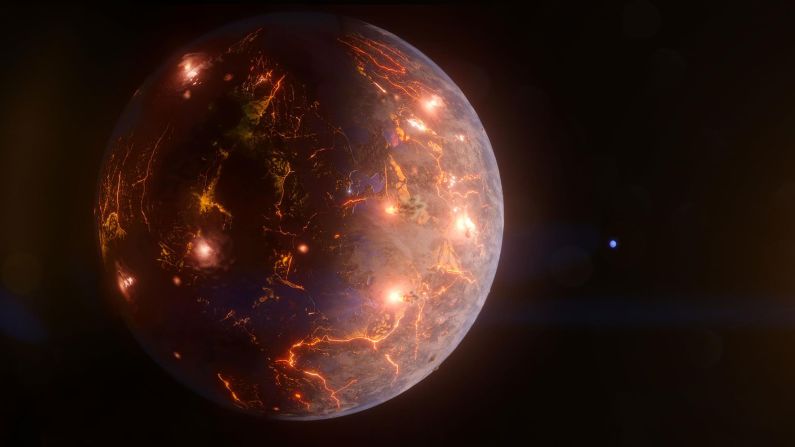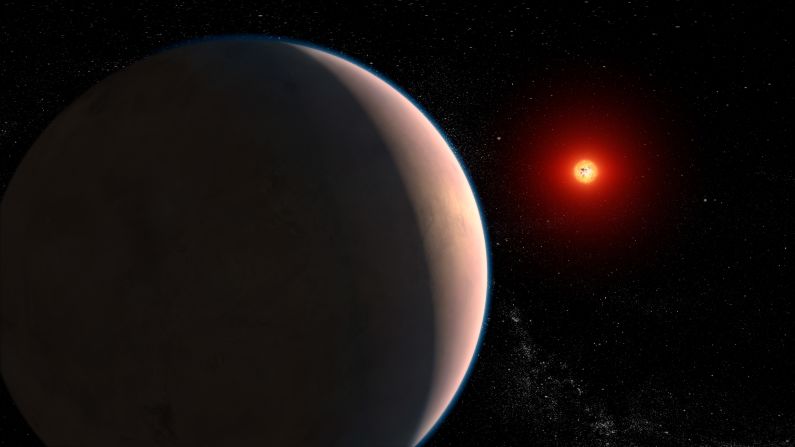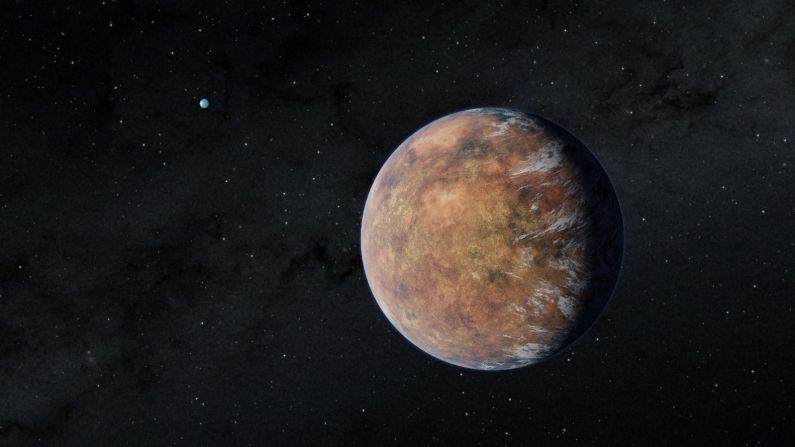Editor’s Note: Sara Seager is a professor of Planetary Science and Physics at the Massachusetts Institute of Technology. The views expressed in this commentary are her own.
Story highlights
Will humans ever live on other planets? Asks astrophysicist Sara Seager
Future generations may need to terraform planets to make them habitable
We may see a future of bioengineered humans able to live on 'unearthly' planets
People dream of traveling to the stars. Movies like Interstellar and Avatar, and hundreds of other captivating science fiction stories, paint a picture as to what might be out there.
But will space travel to worlds beyond our Solar System ever become a reality?
Astronomers made a giant leap forward for the dreams of space travel with the discovery of a planet around the very nearest star to our sun – Proxima Centauri. “Near” is a relative term. At 25 trillion miles away, Proxima is still far out of reach for human space travel.
Proxima Centauri b orbits within its star’s “Goldilocks Zone.” As heated by the star, the planet’s surface might be not too hot, not too cold but just right for life, if the planet has an atmosphere like Earth’s.
But that is a huge “if.”

The planet Proxima Centauri b may have an atmosphere very different from Earth’s. Too much of a greenhouse effect or not enough. A massive crushing atmosphere or almost none at all. The atmosphere acts like a blanket to control the surface temperature. If we are to ever travel to a distant world, it needs to be one where the atmosphere can create a surface temperature to support liquid water—needed for all life as we know it.
Searching for Earth-like worlds
As an astrophysicist I research exoplanet atmospheres and have invented methods to learn more about them. We call our methods “remote sensing” because we gather information from afar, using Hubble and other telescopes in space and on the ground. We astronomers have so far observed dozens of exoplanet atmospheres—albeit hot or large or otherwise completely uninhabitable planets.
We are now excitedly yet impatiently waiting to get our hands on data of Proxima Centauri b and other rocky planets in its star’s Goldilocks zone. New, highly capable telescopes are coming online in the next two to 10 years to help start the job.
We will first look for water vapor in the planet’s atmosphere – suggestive of liquid water oceans. We will be ecstatic to find oxygen, a tell-tale sign of life, and something we humans need to breathe to survive. Finding ozone, a byproduct of oxygen, would be a relief as ozone creates a high atmospheric layer that protects the planet surface from harmful high-energy radiation emitted by the star. We will aim to make an inventory of other gases such as carbon dioxide and methane, to help us understand the greenhouse power of the atmosphere.
I am fully confident we will be able to identify the basic information about a distant world. But, the planets are so far away and so small and faint that we will not have all the information our descendants will need to know if humans can survive or thrive on the distant world. Are there fatally poisonous gases that elude remote sensing detection? Can the soil chemistry support the crops we want to grow? If there is oxygen, is it the right amount, or too much so as to be harmful?
Transforming and terraforming planets
Our descendants will need to geoengineer their surroundings, to remove or add atmospheric gases and to change some chemical properties of the oceans and soils. On Earth we already have what could be considered fledgling efforts and concepts: carbon sequestration to reduce the amount of carbon dioxide; desalination of oceans for drinking water; and even cloud seeding for rain.
Consider for a moment that nature does not provide a nearby planet with anything close to Earth-like conditions. Not Proxima Centauri b, nor any other nearby Goldilocks Zone rocky world we are working so hard to find. Instead of just tweaking the planet conditions our descendants will need to terraform – completely transform a planet’s atmosphere and surface by large planetary-scale engineering.
There are already definitive ideas for terraforming Mars we could borrow from, for a too cold planet with a thin atmosphere.
One of my favorites is to unfurl a large reflective screen that orbits the planet and bounces starlight (the host “sunlight”) to warm the planet’s surface, melting ice caps of frozen carbon dioxide and water. This would literally create an atmosphere – a stable greenhouse atmosphere that enables the right surface pressure for liquid water to exist. To get oxygen, we could seed the planet with oxygen-producing cyanobacteria, perhaps even in advance of our arrival.
Super space travelers of the future
But there may be bigger problems for our future travelers. A crushing surface gravity making it too hard to walk around or to do work. Unpredictable bursts of extreme UV and other highly damaging radiation from stellar flares that are common on stars like Proxima Centauri.
So I imagine a more fantastic future, borne out by a promise of biology to someday control our own genetics.
We may bioengineer a species of humans with: multiple stocky legs and ultra-dense powerful muscles who can handle higher gravity; rapid genetic repair for mutations caused by stellar flares; ability to tolerate types and levels of gases that so far would make us sick. Our descendants may do away with human space travel altogether, instead sending raw biological materials and DNA to create humans on arrival, tailored to the specific planet conditions.
It is my dream to find all of the “Earths next door” and to oversee the space telescopes that will give us the basics so we know what level of geoengineering we should plan for. I’ll then pass the baton on to the next generations who will have to be both clever enough to develop interstellar propulsion and terraforming technology and brave enough to make the journey in whatever form.
Sara Seager is a professor of Planetary Science and Physics at the Massachusetts Institute of Technology. The views expressed in this commentary are her own.









































